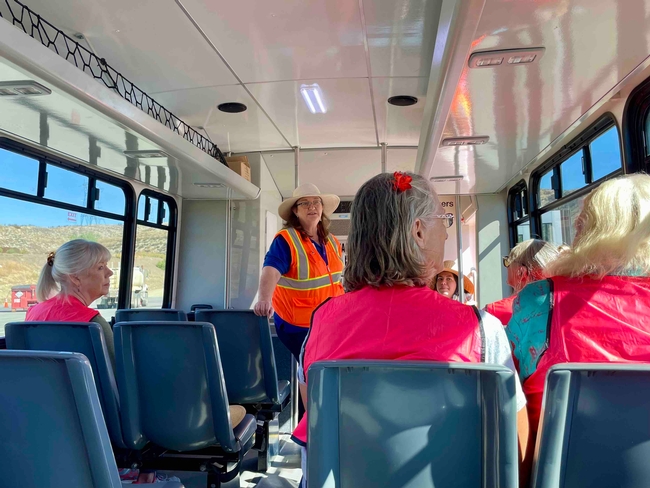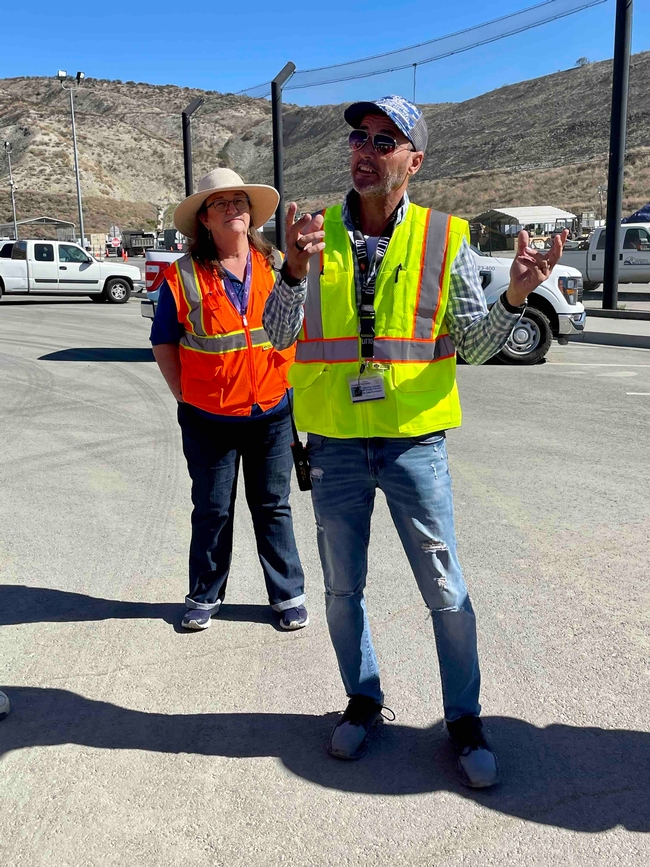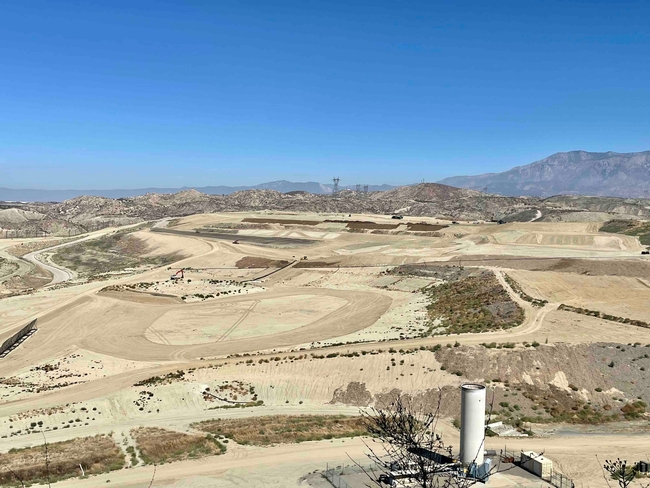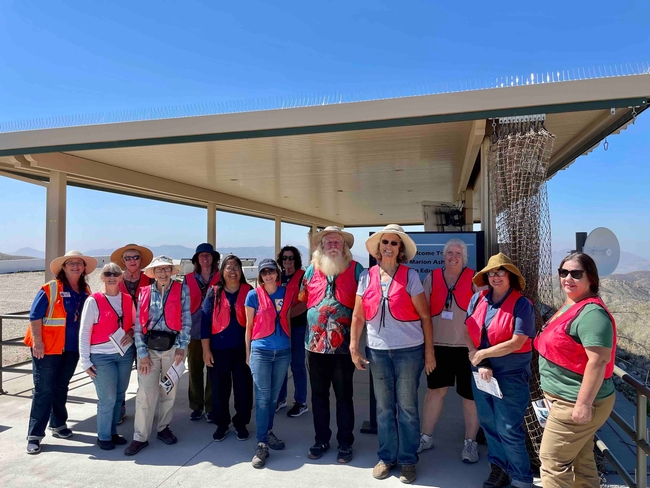
Lamb Canyon is a Class III Sanitary Landfill covering 1189 acres, with 144.6 acres permitted for landfilling. Opened in 1970, its service area includes Beaumont, Banning, San Jacinto, Hemet, Coachella Valley, Pine Cove, Idyllwild, Cherry Valley, Cabazon, Homeland, Romoland, and Winchester. In 2022, it processed an impressive 606,481 tons of waste.
Waste Management and Sustainability
Our tour began at the scale house, where incoming vehicles are weighed to calculate the amount of waste delivered. With approximately 300 vehicles weighed daily, this step is essential for effective landfill management. Because of increasing customer traffic, the facility is currently upgrading its scales, roadways, and traffic signs.

Our next stop was the organics collection and composting area. Composting at this site is a 15-day process that turns green waste (excluding food waste) into compost used for erosion control within the landfill. There are plans to make compost available to the public at the Reuse Store.
Exploring Landfill Operations

Heavy machinery, including dozers and compactors, is used to break down and compress the waste. Pipes collect methane gas and carry it to a flare station where it is burned and safely released to the atmosphere as carbon dioxide and water vapor. A drainage system collects leachate, the liquid filtering through the landfill, to protect groundwater. Leachate is then stored in tanks and recycled for dust control within the landfill. Parts of the landfill also have a liner to contain leachate.
At night, waste in the active part of the landfill is covered with tarps to shed surface water, prevent fires, and reduce scavenging by animals which spread disease. Drones and falcons are used to keep birds at bay.
Surprisingly, the landfill also contains a 200-acre conservation area, providing habitat for a variety of sensitive plant and animal species including western sycamores, mountain lions, burrowing owls, and red-tailed hawks.
An Eye-Opening Experience Open to All
At the end of our tour, we received gift bags containing recycled and reusable goodies. More importantly, we left with a better understanding of where our trash goes and the engineering required to protect the environment. The volume of waste managed here emphasizes the importance of recycling, reusing, and reducing waste in our daily lives.
If you're interested in exploring Lamb Canyon Landfill, free guided tours are available from March through October, Monday through Thursday, for groups of 10 to 42 people. For more information, visit the Riverside County Department of Waste Resources website at https://rcwaste.org/education-center.
Have you enjoyed reading this blog? Do you have questions? Need help with environmental education? Feel free to contact me at dschnur@ucanr.edu. I look forward to hearing from you and supporting you.
